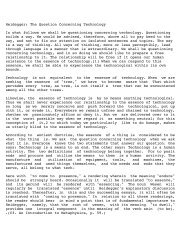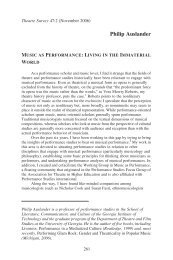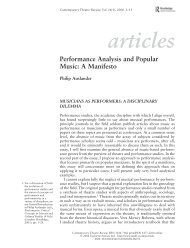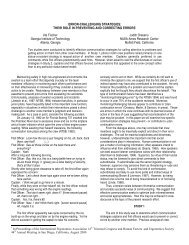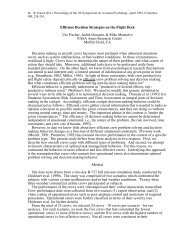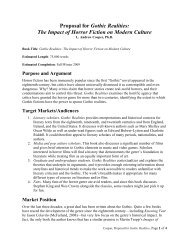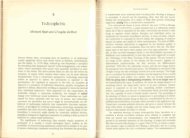INTERACTION DESIGN PRINCIPLES FOR INTERACTIVE ...
INTERACTION DESIGN PRINCIPLES FOR INTERACTIVE ...
INTERACTION DESIGN PRINCIPLES FOR INTERACTIVE ...
You also want an ePaper? Increase the reach of your titles
YUMPU automatically turns print PDFs into web optimized ePapers that Google loves.
the ABC telecast throughout the evening” (ABC Enhanced TV Press Release, March 18,<br />
2002).<br />
3.6 DOCUMENTARIES<br />
Documentaries lend themselves well to interactive programming due to the<br />
encyclopedic nature of their content. Documentaries are meant to be informative,<br />
educational, and engaging. While documentaries traditionally do attract viewers with<br />
competitive elements, nor do they draw large communities of viewers who are eager to<br />
interact in real time, the incredible depth of information available – that is, the hundreds<br />
of hours of extra footage and archival materials that would otherwise never be available<br />
to viewers – can be strategically leveraged by iTV producers to produce a more<br />
personalized and compelling viewing experience. By giving the viewer options to explore<br />
various aspects of the subject matter more deeply, he/she can play an active role in<br />
“determining how the documentary is represented and how much information is<br />
conveyed, as much as producers and directors do when filming” (Curran, 2003).<br />
In 2001, BBC Science aired Walking with Beasts, a major digital animation series<br />
accessible to digital satellite, digital terrestrial, Web, broadband, and cable television<br />
viewers across the U.K. As illustrated by Figure 3.8, the iTV program allowed viewers to<br />
customize their viewing experience by selecting from different audio and video<br />
components, choosing between multiple narrators, active pop-up fact boxes, or watching<br />
synchronized picture-in-picture clips highlighting scientific evidence behind a discovery<br />
or presenting information about the making of the program itself (Curran, 2003).<br />
66



